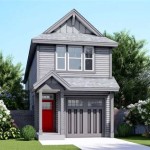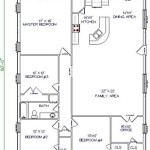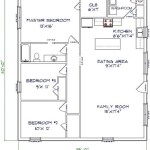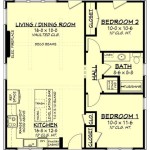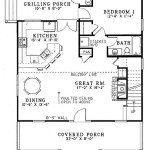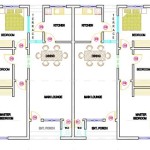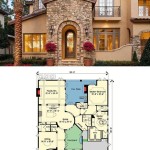45 Degree Angle House Plans: Exploring Design Possibilities and Considerations
House plans incorporating 45-degree angles, also known as diamond or oblique angles, present unique architectural and spatial design challenges and opportunities. These plans deviate from traditional orthogonal layouts, offering potential benefits regarding natural light optimization, spatial differentiation, and aesthetic appeal. However, they also introduce complexities related to structural integrity, construction costs, and furniture placement.
The incorporation of 45-degree angles in house plans is not a new phenomenon, having appeared in various architectural styles throughout history. From small, idiosyncratic homes to large, complex structures, the use of these angles can serve different purposes, ranging from maximizing views to creating a more dynamic and engaging interior space. Understanding the inherent characteristics and implications of these designs is crucial before embarking on such a project.
This article explores the considerations and design possibilities associated with 45-degree angle house plans. It examines the potential advantages and disadvantages, structural challenges, and potential impacts on cost and functionality. By providing a comprehensive overview, the aim is to equip prospective homeowners and designers with the information necessary to make informed decisions regarding the incorporation of 45-degree angles in residential architecture.
Key Points to Consider Before Implementing a 45-Degree Angle House Plan
Before committing to a house plan that features 45-degree angles, it is essential to carefully evaluate several key factors. These include structural considerations, cost implications, furniture placement possibilities, and impact on overall energy efficiency and building codes.
Structural Integrity: The presence of 45-degree angles can complicate the structural framework of a house. Traditional framing techniques, which rely on right angles, may need to be adapted or supplemented to ensure stability and load-bearing capacity. This may involve employing more complex and costly engineering solutions, such as steel beams or specialized truss systems, to adequately support the roof and walls. Furthermore, the transfer of loads along these angled lines can create stress concentrations that require careful attention to detail during the design and construction phases. Proper engineering analysis is essential to ensure the long-term durability and safety of the structure.
Cost Implications: Building a house with 45-degree angles is generally more expensive than constructing a traditional rectangular or square house. This is due to several factors. First, the complexity of the design requires more skilled labor and specialized construction techniques. Second, material waste is typically higher, as cutting and fitting materials to angled surfaces generate more scrap. Third, custom-made components, such as windows and doors, may be necessary to accommodate the unconventional angles, adding to the overall cost. These increased expenses must be carefully considered and factored into the budget early in the planning process.
Furniture Placement and Spatial Planning: The presence of 45-degree walls can significantly impact furniture placement and spatial planning within the house. Traditional furniture, designed for right-angled rooms, may not fit comfortably or aesthetically into these spaces. This can necessitate the acquisition of custom-made furniture or require creative solutions to maximize the use of available space. The angled walls may also limit the flexibility of room layouts and the ability to reconfigure the interior space in the future. Careful consideration must be given to how furniture will be arranged and how the angled walls will affect the flow of movement throughout the house.
Advantages of Incorporating 45-Degree Angles in House Design
Despite the inherent challenges, incorporating 45-degree angles in house design can offer several distinct advantages. These include enhanced natural light penetration, improved views, increased spatial differentiation, and a unique aesthetic appeal.
Enhanced Natural Light Penetration: 45-degree angles can be strategically used to optimize the penetration of natural light into the interior spaces of a house. By orienting walls and windows at oblique angles, it is possible to capture sunlight from multiple directions and maximize the amount of light that reaches different areas of the house throughout the day. This can reduce the need for artificial lighting, leading to energy savings and a more pleasant and inviting indoor environment. The use of strategically placed skylights in conjunction with angled walls can further enhance the natural light penetration and create a brighter and more airy atmosphere.
Improved Views: Angled walls can be strategically positioned to capture specific views from the surrounding landscape. By orienting windows and walls at 45-degree angles, it is possible to frame views that would not be visible from a traditional rectangular house. This can be particularly beneficial in locations with scenic surroundings, such as waterfront properties or houses situated on hillsides. The angled walls can also create a sense of privacy by directing views away from neighboring properties and towards more desirable vistas. Careful consideration should be given to the orientation of the house and the placement of angled walls to maximize the potential for improved views.
Increased Spatial Differentiation: The incorporation of 45-degree angles can create a more dynamic and visually interesting interior space. The angled walls can break up the monotony of straight lines and create a sense of flow and movement throughout the house. They can also be used to define different zones within a room, creating a more defined sense of spatial differentiation. This can be particularly useful in open-plan living areas, where angled walls can be used to delineate different functional spaces, such as the living room, dining area, and kitchen. The use of different materials and finishes on the angled walls can further enhance the sense of spatial differentiation and create a more visually stimulating interior environment.
Addressing Structural and Construction Challenges
Building a house with 45-degree angles presents unique structural and construction challenges that must be carefully addressed. These challenges typically relate to framing, roofing, and the integration of standard building materials.
Framing Considerations: Traditional framing techniques, which rely on right angles and standardized lumber dimensions, may not be directly applicable to 45-degree angle house plans. This requires the use of more complex framing methods, such as steel framing or custom-cut lumber, to accurately create the angled walls and roof sections. The connections between the angled walls and the foundation and roof must be carefully designed and executed to ensure structural stability and prevent water infiltration. The use of advanced computer-aided design (CAD) software can be helpful in accurately modeling the framing system and identifying potential problem areas before construction begins.
Roofing Challenges: Roofing a house with 45-degree angles can be particularly challenging, as the roof planes will typically intersect at oblique angles. This requires careful planning and execution to ensure proper drainage and prevent leaks. The use of specialized roofing materials, such as metal roofing or custom-fabricated shingles, may be necessary to accommodate the complex roof geometry. The installation of flashing and other waterproofing measures must be meticulously executed to prevent water damage. Consulting with an experienced roofing contractor who has experience with complex roof designs is essential to ensure a successful outcome.
Integrating Standard Building Materials: Incorporating standard building materials, such as windows, doors, and prefabricated components, into a 45-degree angle house plan can present challenges. These materials are typically designed for installation in right-angled openings, and modifications may be necessary to adapt them to angled walls. Custom-made windows and doors may be required to fit the angled openings, which can significantly increase the cost of the project. Careful planning and coordination with the manufacturer are essential to ensure that the windows and doors are properly installed and function correctly. The use of innovative construction techniques, such as prefabricated wall panels, can help to streamline the construction process and reduce the overall cost of the project.

Country Craftsman House Plan With 45 Degree Angled Garage 360068dk Architectural Designs Plans

House Plan 2 Garage At 45 Degree Angle

Country Craftsman House Plan With 45 Degree Angled Garage 360068dk Architectural Designs Plans

Plan 360068dk Country Craftsman House With 45 Degree Angled Garage

Mountain Plan 3 199 Square Feet Bedrooms 2 5 Bathrooms 940 00674

Country Craftsman House Plan With 45 Degree Angled Garage 360068dk Architectural Designs Plans

House Plan 46914ll Quality Plans From Ahmann Design

Best House Plans Design Ideas For Home Glamorous Collection Angled Garage

Contemporary Plan 2 175 Square Feet 3 Bedrooms 5 Bathrooms 2559 00942

Gallery Of Three Angle House Megowan Architectural 54

